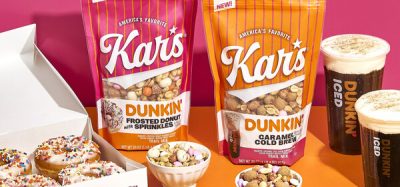Segmentation of sports nutrition driven by new consumer demands
- Like
- Digg
- Del
- Tumblr
- VKontakte
- Buffer
- Love This
- Odnoklassniki
- Meneame
- Blogger
- Amazon
- Yahoo Mail
- Gmail
- AOL
- Newsvine
- HackerNews
- Evernote
- MySpace
- Mail.ru
- Viadeo
- Line
- Comments
- Yummly
- SMS
- Viber
- Telegram
- Subscribe
- Skype
- Facebook Messenger
- Kakao
- LiveJournal
- Yammer
- Edgar
- Fintel
- Mix
- Instapaper
- Copy Link
Posted: 29 April 2020 | Sam Mehmet (New Food) | No comments yet
There are said to be three particularly strong development trends at present: the provision of plant-powered products; clean label innovation; and greater personalisation.


Global launches of sports nutrition products more than doubled between 2015 and 2019 and suppliers are now segmenting their offerings to meet the varied needs and interests of customers, according to Innova Market Insights.
Demand for plant-based foods is expanding in all areas of food and drink with sports nutrition quickly catching on to the trend, the research firm pointed out. For example, sports bars are said to be using more nuts, fruits, vegetables and other botanical ingredients, and even in more specialist sports protein categories, plant-powered products are emerging.
Pea protein (used in 32 percent of plant-based launches in 2019) and rice protein (21 percent) were noted to be particularly popular ingredients, but Innova also stated that there is ongoing experimentation with more unusual options such as fava bean, microalgae and pumpkin seed proteins.
“Sports nutrition came to the clean label party a little later than many areas of food and drink but is now increasingly focused on this issue,” a statement from the research company read. Around a third of launches in 2019 reportedly carried clean label claims, up from 20 percent in 2015. No additives/preservatives claims also doubled over the same period.
Younger consumers are still said to be the primary audience for sports nutrition products, and with Gen Z and Millennials expressing great interest in products that meet their individual needs or tastes, Innova suggested it is no surprise to see further segmentation of the sports category. Products geared towards pre- and post-workout needs are already well established but classic benefits related to performance, endurance and energy have now been joined by newer diet trends, such as Keto, while ingredients for alternative needs are also emerging, such as CBD, adaptogens and nootropics.
Related topics
Clean Label, Health & Nutrition, New product development (NPD), Research & development, The consumer








